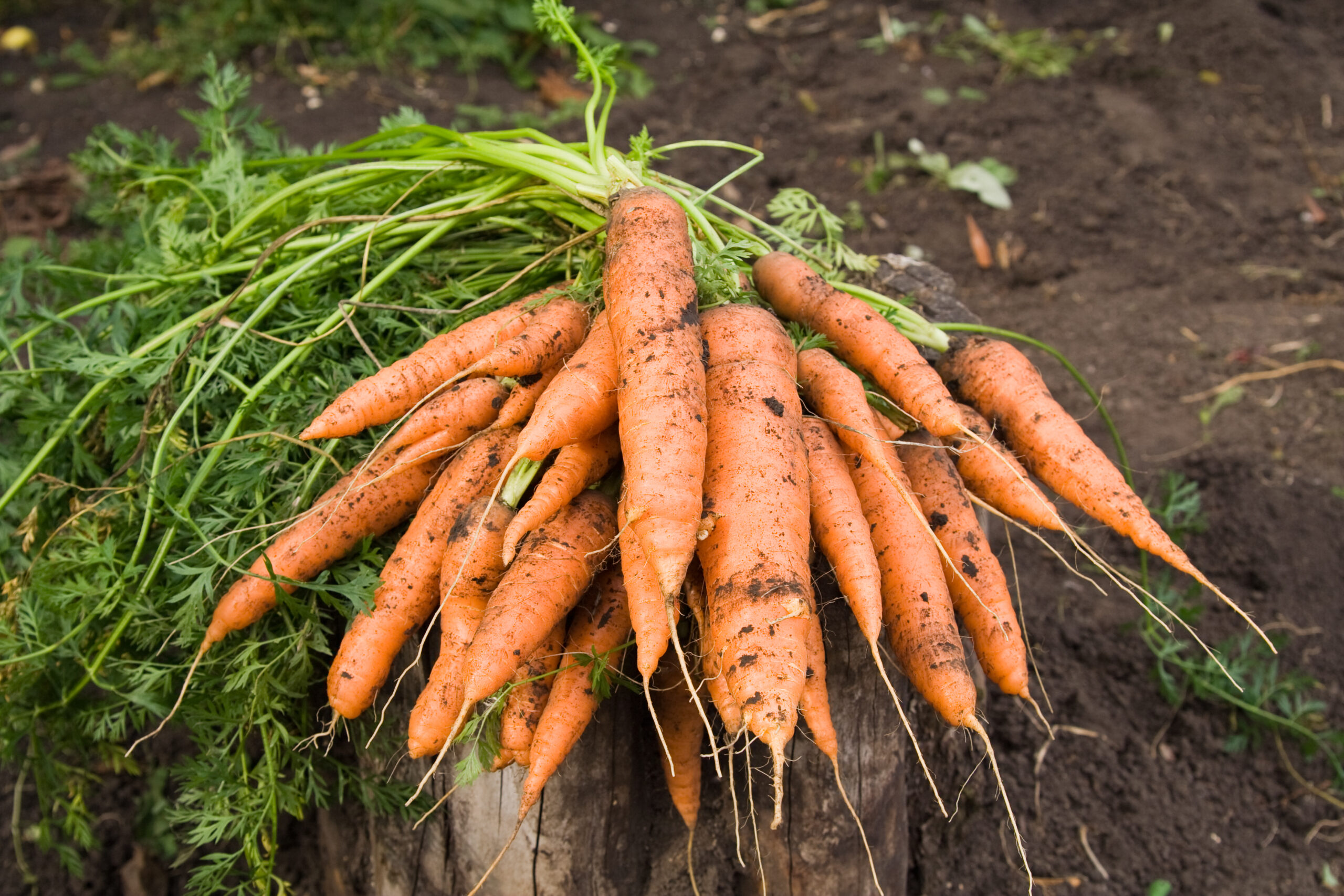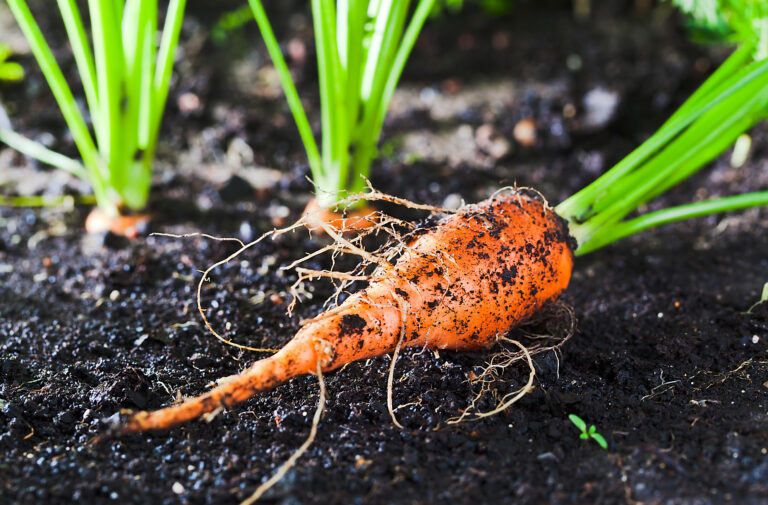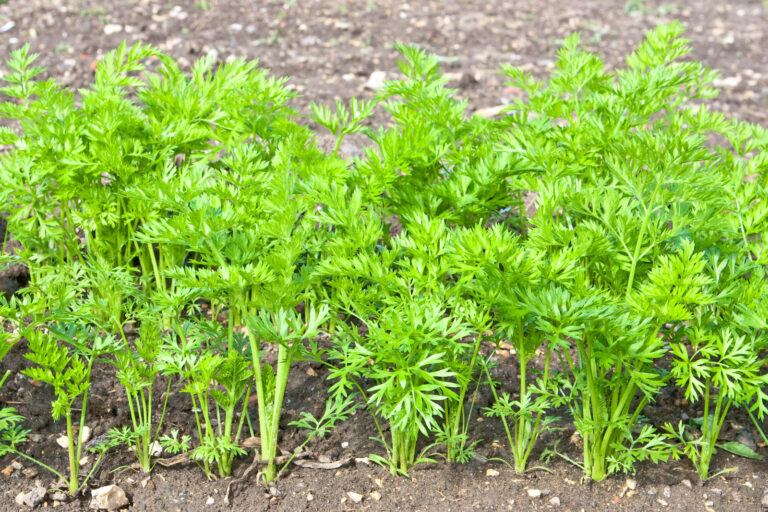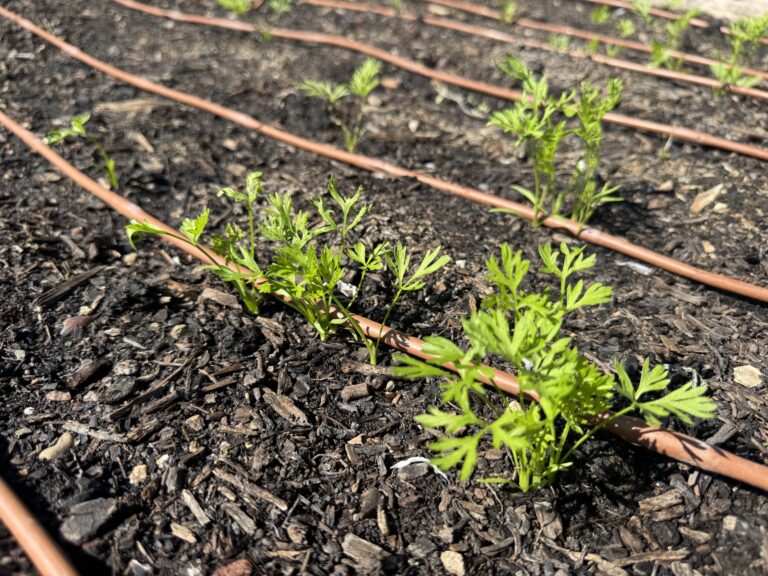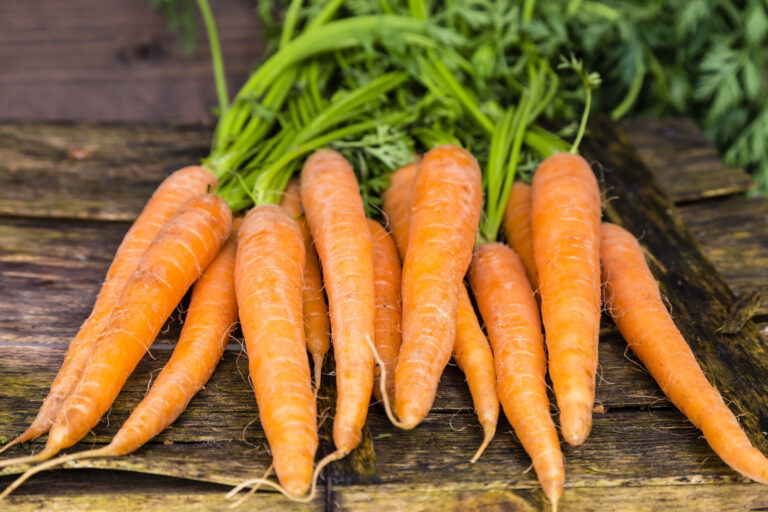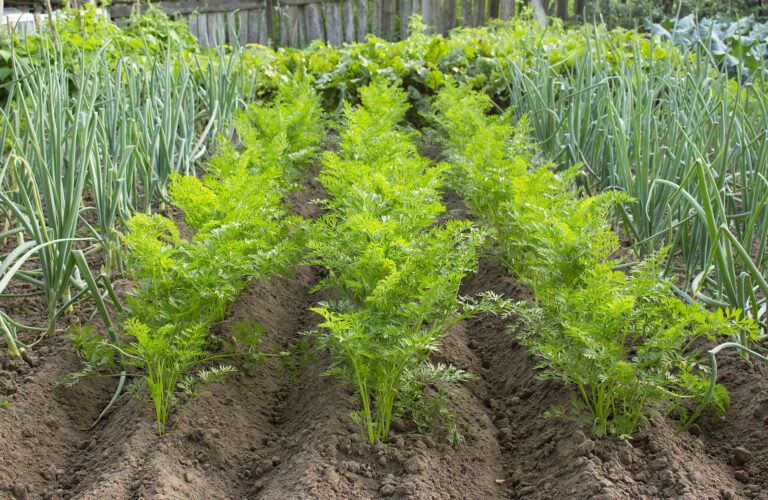How to Plant and Grow Carrots in Winter
You can grow carrots in winter, especially in milder climates or with the help of season-extending techniques like cold frames, plastic tunnels, or row covers. Carrots are hardy and can tolerate frost, but they grow best when protected from extreme cold.
If you plant carrots in late autumn, they will continue growing slowly through winter, particularly if you use these protective methods to create a warmer, more stable environment. Mulching the soil around the carrots can also help insulate the roots and keep them from freezing.
Cold-hardy varieties like Napoli, Autumn King, and Merida are excellent choices for winter growing, as they can withstand lower temperatures and produce sweet, flavorful roots throughout the season.
Growing carrots in winter requires some careful planning and protection, but it’s a great way to enjoy fresh harvests even in colder months. Here’s how you can do it:

Choose the right varieties
- Select cold-tolerant and winter-hardy varieties such as Napoli, Autumn King, or Merida, which are well-suited for growing in cooler temperatures and can produce sweet, flavorful roots in winter conditions.
Here are some excellent carrot varieties that thrive in cooler conditions and can be grown in winter:
Napoli
- Description: Napoli is one of the best varieties for winter growing. It produces smooth, cylindrical roots that are about 7-8 inches long. Known for its sweetness, Napoli develops even more flavor as the temperatures cool, making it a great choice for winter harvests.
- Best for: Winter and fall planting due to its cold hardiness and ability to sweeten in cold weather.
Autumn King (or Autumn King 2)
- Description: This is a large, late-season carrot variety that is very cold-tolerant. The roots grow long (up to 12 inches) and have a deep orange color. Autumn King stores well both in the ground and after harvest, making it ideal for winter growing and late harvesting.
- Best for: Overwintering with mulch or protection, providing fresh carrots into late winter.
Merida
- Description: A variety specifically bred for winter cultivation, Merida is known for its long, slender roots and its ability to withstand the cold. It’s often planted in the fall and harvested throughout the winter and early spring. It offers a mild, sweet flavor that intensifies as temperatures drop.
- Best for: Late autumn planting and winter harvesting due to its exceptional cold tolerance.
Chantenay Red Core
- Description: This heirloom variety is shorter and stockier, making it ideal for heavier soils or areas with less depth. It has a strong core and sweet flavor, improving as the temperatures cool. Its roots grow about 5-6 inches long, and it stores well into the winter months.
- Best for: Growing in shallow or rocky soils and cold climates, with roots that hold well in the ground during winter.
Imperator 58
- Description: Imperator 58 is a widely grown variety that performs well in colder weather. It produces long, slender roots with a sweet flavor. Though traditionally grown in warmer months, it can be sown in late fall for winter harvests, especially when given protection with row covers or tunnels.
- Best for: Winter harvest with the help of cold frames or tunnels, offering a tender, sweet flavor when grown in cool conditions.
Bolero
- Description: Known for its disease resistance and winter hardiness, Bolero produces medium to large cylindrical roots. It has a crisp texture and sweet flavor, making it excellent for both fresh eating and storage. Bolero is ideal for fall planting and can be harvested well into the winter.
- Best for: Winter harvests and long-term storage due to its durability and resistance to common carrot diseases.
Danvers 126
- Description: This variety is shorter and more tapered, perfect for cooler climates and heavy soils. Danvers 126 is highly versatile, producing roots that are sweet and nutritious. It can handle cool temperatures and can be grown into winter if protected.
- Best for: Winter growing in tougher soil conditions or under cold frames.
Purple Haze
- Purple Haze
- Description: This colorful variety is not only striking with its deep purple skin and orange core but also handles cold weather well. Purple Haze adds a unique twist to your winter carrot harvest and remains sweet and tender as the temperature cools.
- Best for: Adding variety and color to winter harvests while still offering cold-hardiness.
These varieties are excellent for growing in cooler months, either in the ground with mulch or under the protection of cold frames or tunnels. As temperatures drop, these carrots often become sweeter, making them perfect for winter harvests.
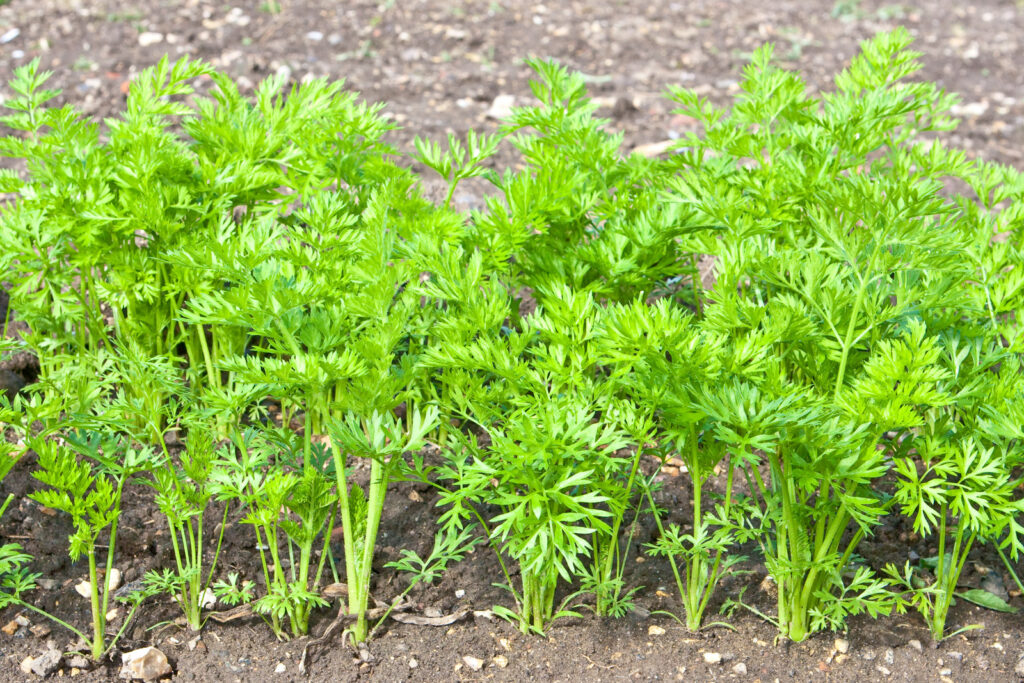
Planting time
- Sow your seeds in late summer to early autumn, about 10 to 12 weeks before the first hard frost in your area. This gives the carrots time to develop before the temperature drops too low. The goal is to get them well-established before winter sets in.
Prepare the soil
Carrots grow best in loose, well-draining soil that is free of rocks or hard clumps. Deeply till or loosen the soil, adding organic matter like compost to enrich it. Carrots need plenty of space for their roots to develop straight.
Use cold protection
To protect your carrots from frost and freezing temperatures, use season-extending methods such as:
- Cold frames: These mini-greenhouses trap heat from the sun and insulate your crops from extreme cold. Read more>
- Row covers: Lightweight fabric or plastic covers can be laid over your carrot bed to keep warmth in while allowing light and water through. Read more>
- Plastic tunnels: These tunnels provide excellent insulation, acting like a greenhouse, and help to keep the ground from freezing. Read more>
Mulch heavily
As temperatures drop, cover your carrot bed with a thick layer of mulch (straw, leaves, or wood chips) to insulate the soil. This helps keep the ground warm and protects the roots from freezing. Carrots can be left in the ground and harvested as needed throughout winter.
Water sparingly
Watering needs decrease in the winter, but don’t let the soil dry out completely. Keep the soil lightly moist to avoid stress on the plants, but overwatering should be avoided, as damp, cold soil can lead to root rot.
Harvesting carrots in winter
Carrots that grow in colder temperatures become sweeter, as the plants convert stored starches into sugars to protect themselves from the cold. You can harvest them throughout the winter by digging up the roots as needed. If heavily mulched or under a cover, the soil will remain workable, and you can access the carrots even in freezing conditions.
By following these steps and using protective measures, you can grow carrots successfully in winter and enjoy fresh, sweet, homegrown carrots through the colder months.
Carrot Growing Hub
The Ultimate Guide to Growing Carrots from Seed to Harvest
1. Getting Started (Site & Timing)
- Where to Plant Carrots for the Best Root Development
- When to Plant Carrots: Timing for Every Season
- Carrots Seed Starting Tips
- How to Plant and Grow Carrots in Winter
- Grow Carrots Anytime of the Year in Five Steps
- How to Grow Carrots in Containers or Raised Beds
2. Planting & Varieties
- How to Plant and Space Carrots for Optimal Growth
- Carrot Varieties by Type: Best Picks for Home Gardeners
- Orange, Yellow, Red, Purple, and White Carrots: How to Choose the Right One
- Carrot Companion Plants: What Grows Well Together
3. Growing & Care
- Caring for Carrots Throughout the Growing Season
- How to Water Carrots the Right Way
- Carrot Crop Rotation: What to Plant Before and After
- Carrot and Parsnip Growing Problems: Troubleshooting
4. Harvest, Storage & Use
Related articles:
How to Grow a Winter Vegetable Garden
How to Grow a Salad Garden in 10 Steps
How to Grow a Salad Garden of Leafy Greens in Winter

